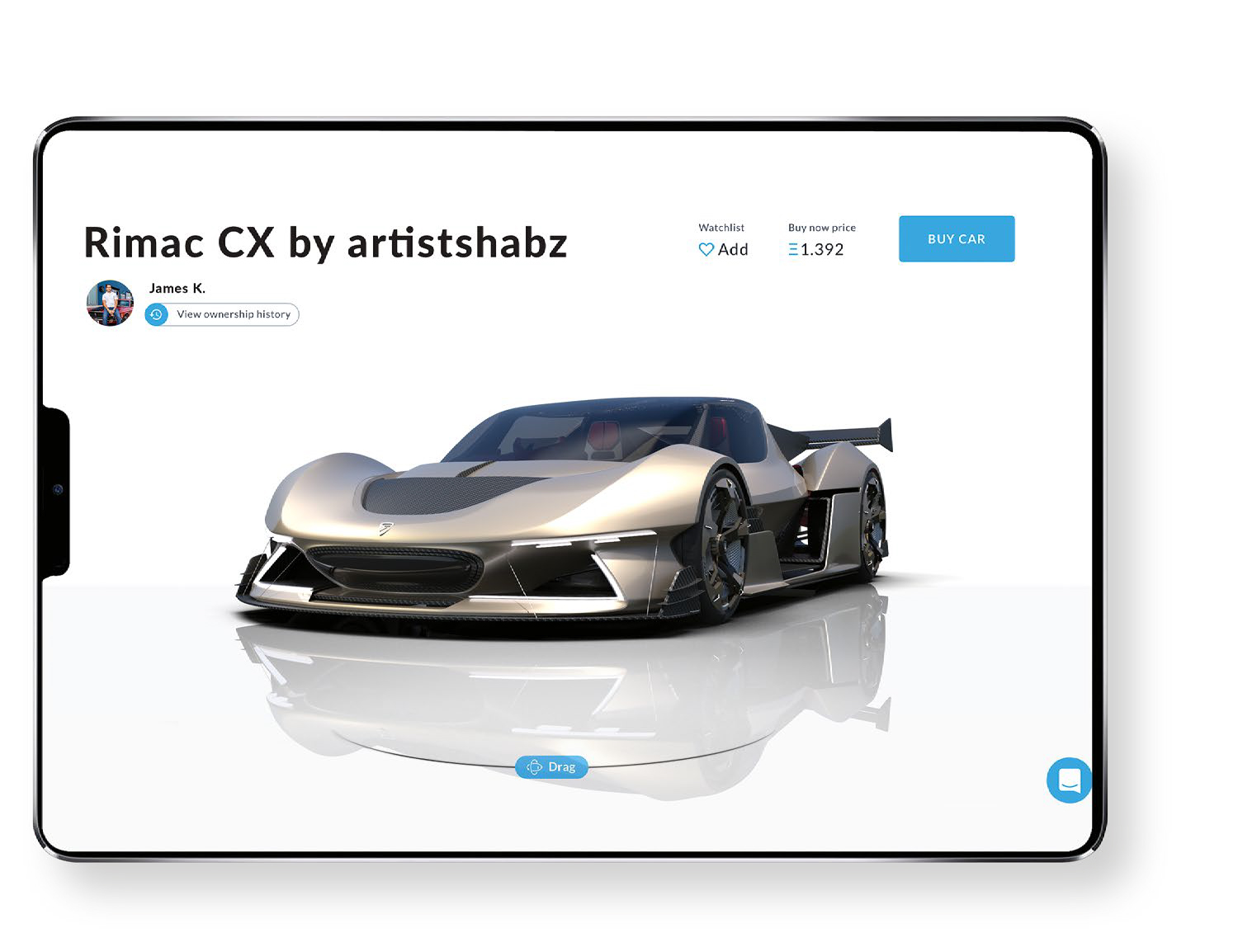
The digital revolution that has hit finance, the art market and even entertainment is now spilling into exotic cars.
Non-fungible tokens or NFTs are the latest buzzword taking over the cryptocurrency chatter, touted as the next big thing in collecting culture. Unlike “fungible” assets, such as money, NFTs have unique properties. And while they can be bought and sold, their value is usually set by the creator, seller or at an auction (e.g. fine art is non- fungible, as are gemstones, watches and vintage cars).
An item sold as digital NFT (usually using cryptocurrency) itself might not be digital-only, but its token or contract is. Ownership is etched on to the digital ledger that is the blockchain, verified by thousands of computers, meaning it cannot be tampered with. For all the reasons above, you can see why this particular type of sale is lending itself to the digital art world. But as American start-up Motobloq, a decentralised virtual vehicle marketplace, is proving, it’s also opening doors to a new era of (digital) car collecting: aka Hot Wheels of the future.
“I’m a motorcycle and a car guy,” says James Keck, Motobloq founder, one of the first marketplaces for NFT car collecting. “My parents both raced vintage race cars, and I grew up around petrolhead culture – so it felt natural to merge what I had been seeing with digital assets and cars.” Keck had been working across the enterprise technology world, rolling out blockchain systems for big corporations, when he started thinking about how the digital asset culture we’re used to seeing in video games could evolve, just as NFTs began to take off. “I thought maybe people might want to own these cars or digital copies of them,” he says.
Motobloq is still in its infancy and is set to go fully live on June 1 – until then, users can peruse the four previewed releases, with some cars available to reserve. The showroom so far is a mixed-bag, spanning from a Datsun 240Z to a Pagani Zonda Revolucion, a Singer Porsche 911 nd even a Dubai Police G-Wagen. “We wanted to curate the cars, so it wasn’t just influencer cars, you know?” says Keck of his enthusiast- friendly garage, which has come through various channels, including real-life ownership, collaborations with OEMs or commissioned artists. “Of course, those hot cars are on
there, but there are also ones with historical significance; some are wacky or some our team’s dream cars. My dad’s 2006 Chevy SSR is on there because I thought it was the weirdest car in the world – so I was like, ‘let’s just put it on there!’”
Unlike many other NFT platforms, Motobloq handles microtransactions and blockchain identity/wallet management itself, meaning the transaction is secure, easy and far more sustainably-minded. Each collectible’s quantity and price are relative to the original production run and value – making some of these cars very rare indeed.
As Motobloq launches into its next phase, collectors will be able to interact with their 3D rendered digital cars in their garage as well as through an augmented reality app – yes, just like Pokemon Go. Other integrations might include the ability to build a garage within a decentralised, virtual world and even host virtual car meetups with social interactions. And from there, who knows?
Ultimately, Keck reiterates, the car is yours in the digital realm – at least until you wish to sell it on the Motobloq marketplace (at a price set by you). “We’re not trying to replace the joy of driving, going for a cruise and getting out in your car – that you can’t replace,” he says. “But you know when you’re a kid growing up with the car poster? For me, it was the McLaren F1. You’re like, ‘I’ll own that one day,’ but, realistically, only a handful of people ever get to, but you might have the model. That’s the experience we want to replicate: that appreciation and collectability of cars, but digital.”
Motobloq goes live on June 1; visit motobloq.com

